Our 2019 Tesla Model 3 Was a Learning Experience

From the May 2022 issue of Car and Driver.
40,000-Mile Wrap-Up
We ordered a long-term Tesla Model 3 for one primary reason: to be able to report on using Tesla's Full Self-Driving software over time. Well, the joke's on us, because after we spent $6000 on that option (the price is now double that) in 2019, our car came and went without ever getting it. Paying for an option we didn't receive is definitely a first, one of many when it came to the Model 3. Had we instead invested that money in Tesla stock, we could've cashed out with as much as $150,000. Another new experience was being alerted via a mobile app that our car had a catastrophic breakdown while parked. Other than that biggie, which required a new $2500 rear-motor assembly that was replaced under warranty, our car had no major mechanical issues. After coming to terms with the minimalist interior and lack of gauge-cluster display in front of the driver, we generally liked the Model 3. It's quick, reasonably spacious, and comfortable if a bit noisy over the road.
This was only our second long-term EV ever. The previous one was a Model S five years ago, back when Tesla service was white glove and Supercharging was free. A lot has changed since then, and today there's much more noise about EVs as well as bold claims about the cost (or lack thereof) of charging and service. What follows is a series of things to know regarding both Tesla and EV ownership before you decide to take the plunge.

Efficiency is Extremely Variable
An electric vehicle's efficiency varies dramatically with outside temperature (internal-combustion efficiency also varies but to a much smaller degree). For example, in our best month, August 2020, we averaged 107 MPGe over 1812 miles. Our worst was February 2021, when we averaged 55 MPGe, almost 50 percent worse, over 1182 miles. The difference? The average temperature in February was 27 degrees, while in August it was a balmy 79. Cold temperatures obviously work the cabin heater more and also make charging less efficient. Even parking outside in wintry weather uses energy to keep the pack from getting too frigid. On one bitterly cold night when the mercury dipped down to 5 below zero, the Model 3 consumed 5 percent of its battery capacity just sitting overnight trying not to freeze.
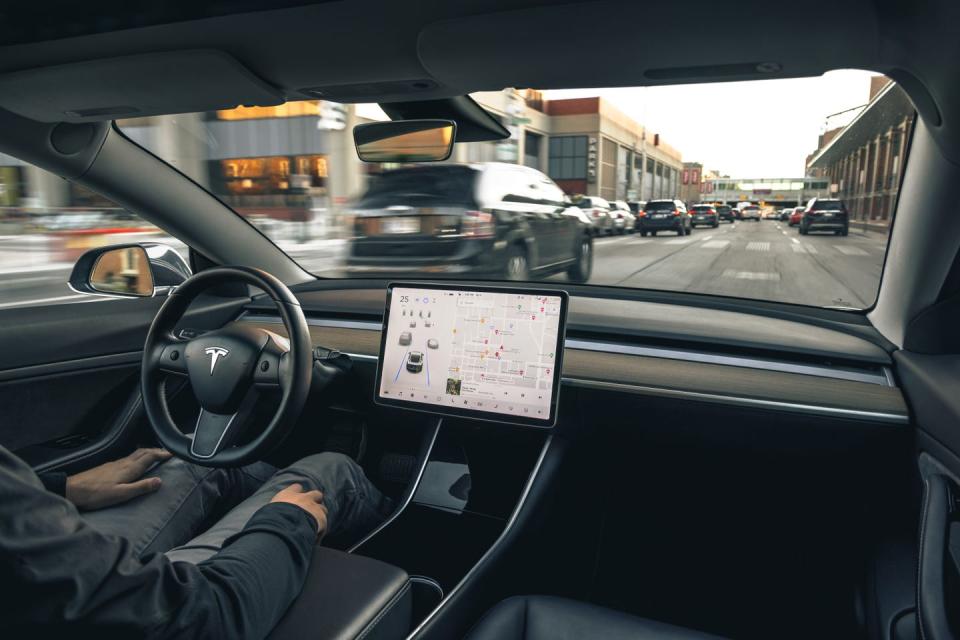
Charging Costs Vary Widely Too
Filling the Model 3 from completely empty to full sometimes cost as little as $12. It also could cost as much as $32. The difference boils down to whether we were using cheaper electricity to slowly charge at home or the office, or charging faster at one of Tesla's Superchargers. How much you plan to fast-charge makes a huge impact on the economics of EV ownership, and savings don't really materialize unless you have a regular Level 2 hookup at home (ideally, you have Level 2 capability at work too). For example, charging with home electricity during our most efficient month works out to a cost of just 4 cents per mile, while paying Supercharger prices during our least efficient month works out to 22 cents per mile. The former handily beats fueling up any gas-powered car, but the latter doesn't, even with the latest spike in prices at the pump. Our overall 83 MPGe average, achieved over a 57/43 percent split in favor of home charging (we expect most owners to do far more charging at home), equates to a cost of 8 cents per mile—on par with a car running on regular gas and getting 50 mpg.
Service Costs Aren't Trivial
The Model 3 has minimal scheduled service. However, one regional requirement that applies to us is lubricating the oft-dormant brake calipers every year or 12,500 miles in areas where roads are salted during winter. Those three lubes each cost oil-change money, totaling $306. But our car's minuscule brake wear over 40,000 miles suggests the pads should last well past 100,000 miles. The Model 3's all-season Michelin tires, on the other hand, were used up after just 30,000 miles, partially because the Tesla version of this tire has less tread depth, probably for a slight boost in efficiency and range. A new set was $1157. Although not technically service costs, replacing the $1088 windshield and later the $1196 glass roof due to stone chips lightened our pockets as much as damage and destruction incidents in other long-term test cars.
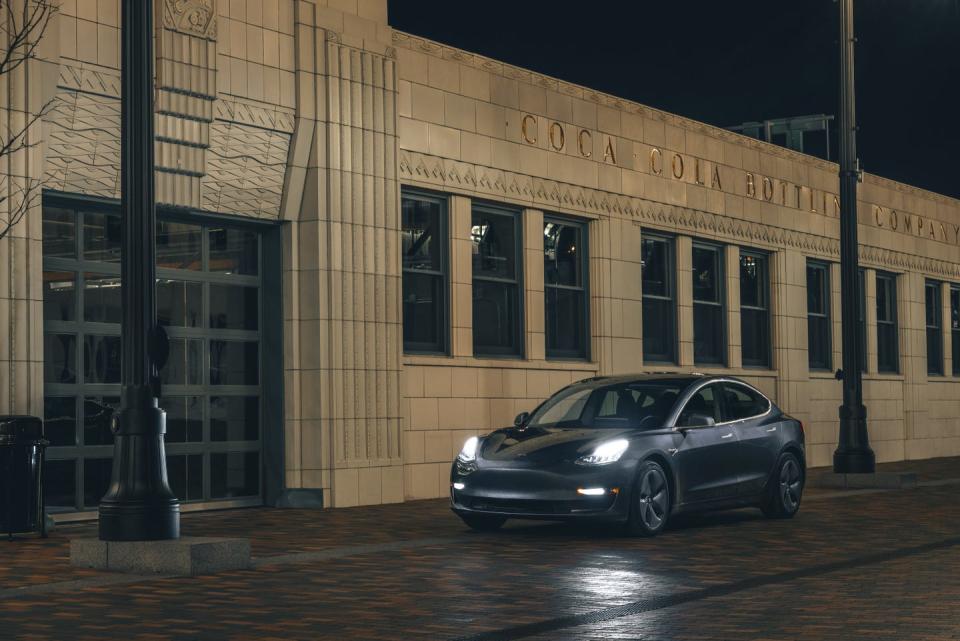
Batteries Degrade
Like a cellphone battery, the lithium-ion packs that power today's EVs lose their ability to hold energy over time. The big questions are how much and how quickly. Two things that accelerate the falloff are lots of fast-charging and charging all the way to 100 percent, both of which we did quite often. Using third-party software called TeslaFi, we could nerd out on all kinds of data about our car's driving and charging, as well as monitor its battery loss. At the 20,000-mile halfway point of our test, our car showed about a 6 percent loss, or a 19-mile range reduction. At that rate, we were on a path to invoke Tesla's warranty of a minimum of 70 percent retention of the battery capacity for eight years or 120,000 miles. But then our battery pack held steady, finishing 40,000 miles with no further capacity reduction.
Change Is Inevitable
Tesla is famous for frequent software updates, and the rest of the industry is racing to match the ability to wirelessly roll out new features, overhaul just about any subsystem, or even boost peak power by 5 percent, another first for our long-term stable. We downloaded 38 new versions of software during our 40,000 miles, averaging an update every 20 days. Not all of them made noticeable changes, like follow-ups to fix bugs. However, some were substantial, including the super-useful Sentry mode to monitor and record the car's surroundings when movement is detected, Smart Summon to remotely send for the car, Camp and Dog modes to keep the climate control active even when you've left the vehicle, traffic-light recognition, and, just after our 40,000 miles were complete, an entirely new screen design. Others were less worthwhile, such as the ability to annoy passersby with noises—including, of course, juicy flatulence—using the exterior speaker, which was iffy even before Tesla was later forced to recall the feature over concerns of drowning out mandated pedestrian warning sounds.
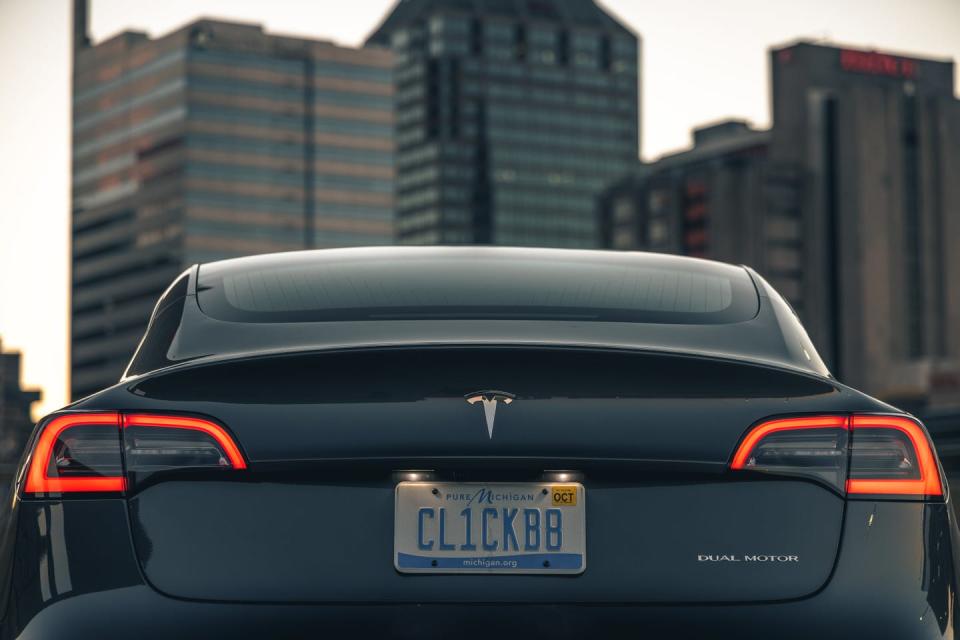
Rants and Raves
Adjusted hood grommets to level the hood. As delivered, the driver's side was lower than the passenger's. —Mike Sutton
Tesla's auto wipers are noticeably less effective than the systems offered by, well, every other carmaker. —Eric Tingwall
There's a lot of road noise, and the ride feels stiffer than our M340i's. —Eric Stafford
The Supercharging infrastructure is better than the car. —Eddie Alterman
The ride, handling, steering, and power make the Model 3 really fun. I enjoy driving it more than any BMW 3-series of recent memory. But the rattles and squeaks emanating from the instrument panel at this early stage make you wonder about long-term reliability. —Rich Ceppos
Just coasted in on whatever's the EV equivalent of fumes because the Model 3 lost 40 miles of range while parked all day. WTH? —Drew Dorian
Our Model 3 has changed substantially since we got it. Autopilot stopping at stop signs and traffic lights is very impressive, although it stops at green lights too. —Connor Hoffman
Hot air starts blowing almost instantly, which is nice on a cold morning. —Joey Capparella
How has the SEC not investigated Tesla for selling a future feature (Full Self-Driving) without a specified date and failing to deliver it to thousands of Tesla owners, including us? —K.C. Colwell
It's weird that Tesla doesn't like to lend us cars, because the cars are probably the best thing about the company. —Joey Capparella
30,000-Mile Update
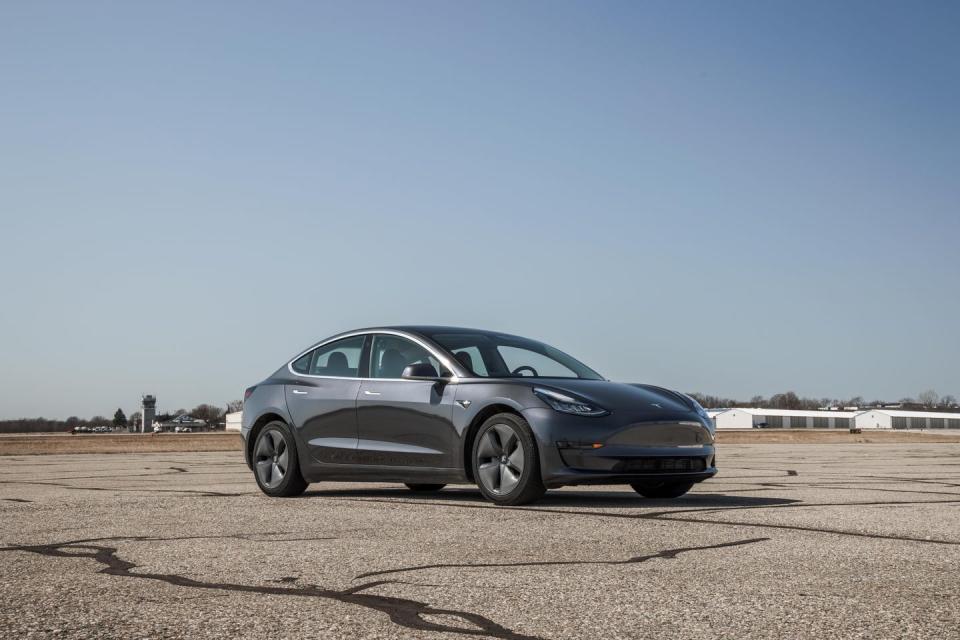
One of the pitches we hear often on the switch to EV ownership is that electric vehicles are cheaper to maintain. But, as we close in on 40,000 miles in a Tesla Model 3, the actual savings in service costs is turning out to be quite minimal.
Sure, the Model 3 needs no oil changes, which in theory should save us significant cost. However, the Model 3's requirement that we lubricate the brake calipers every year or 12,500 miles—something specified for areas that use road salt in the winter months—has cost nearly as much, totaling $432 for three such services thus far, which often also include a tire rotation. Although that's less than the $539 we spent on maintenance for our BMW M340i or the $728 for our Kia Telluride, that savings works out to between $6 and $15 a month over the course of our nearly two years of ownership, which would be barely noticeable in an owner's budget.

Although not included in our official tally of regular maintenance or normal wear, we've had some pricey fixes as well. For example, a stone chip in the glass roof set us back $1200 for a new one, and we paid $1100 for a new windshield for the same reason. And, since Tesla owns all of its service centers and maintains tight control over its parts, there are fewer options to shop around for service in cases like these than for most other cars.
By 30,000 miles, the original Michelin Primacy MXM4 tires were shot. We often get twice as many miles on all-season tires, but rapid tire wear is something that's a common topic on Model 3 owner's forums. At least part of the issue is that the Tesla version of these tires start with 1.5 32nds of an inch less tread depth than the off-the-shelf MXM4s. Although it might not sound like much, that's 20 percent less usable tread depth.
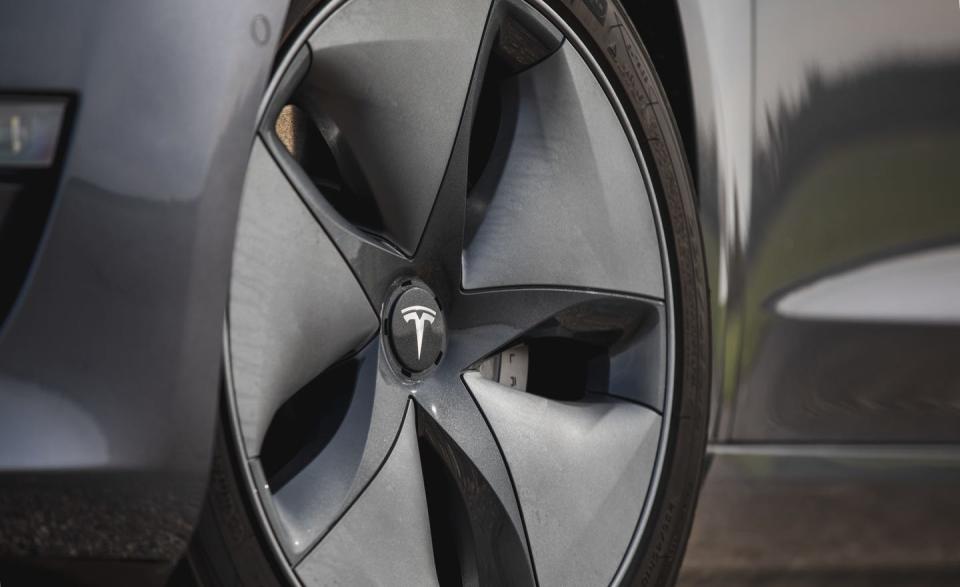
We have just replaced those with the other factory Model 3 fitment, Michelin Pilot Sport 4 summer tires, and we look forward to seeing how much these might improve braking and cornering performance during our final test session at 40,000 miles. A side benefit is that the summer tires were no more expensive than the all-seasons, but a still substantial $1157 has been added to our normal wear tally.
Our consumption and efficiency figures have trended back up in the warmer spring and summer months, topping 100 MPGe for three months running, which has bumped our overall average by one to 85 MPGe. Although we haven't strayed too far from our little corner of the Midwest, we've still managed to accumulate as many as 3500 miles in a month, a testament to Tesla's leadership in DC fast charging. That was one of the clearest takeaways from our recent EV 1000 rally, where the three Teslas swept the podium, with zero issues of nonfunctioning or occupied chargers that many other teams encountered.
That means it hasn't been difficult to put miles on our Model 3, even if the savings in maintenance costs has been minimal.
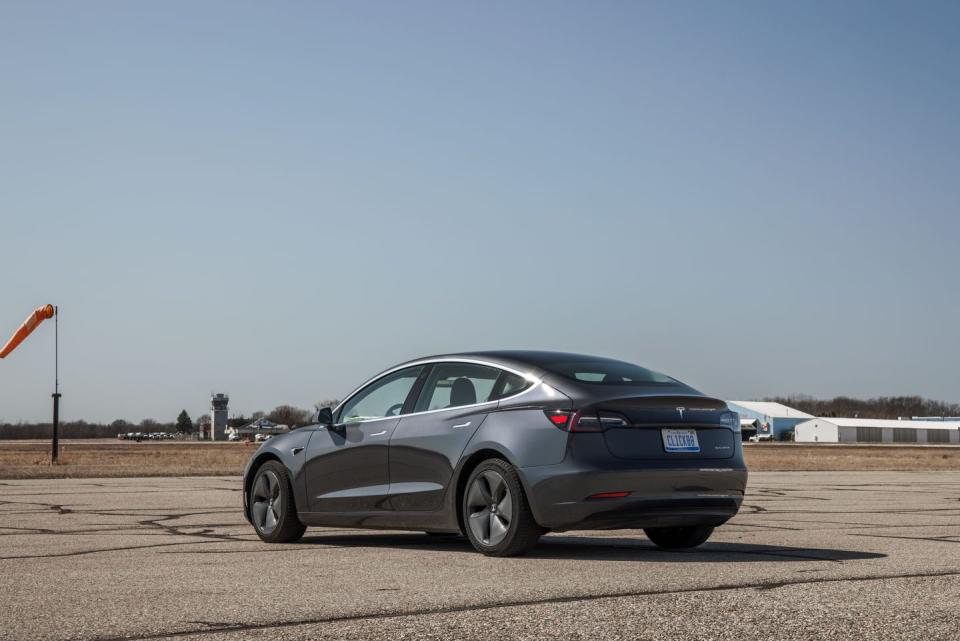
Months in Fleet: 20 months Current Mileage: 35,984 miles
Average Fuel Economy: 85 MPGe
Battery Capacity: 75.0 kWh Observed Fuel Range: 230 miles
Service: $432 Normal Wear: $1159 Repair:$0
Damage and Destruction: $2400
20,000-Mile Update
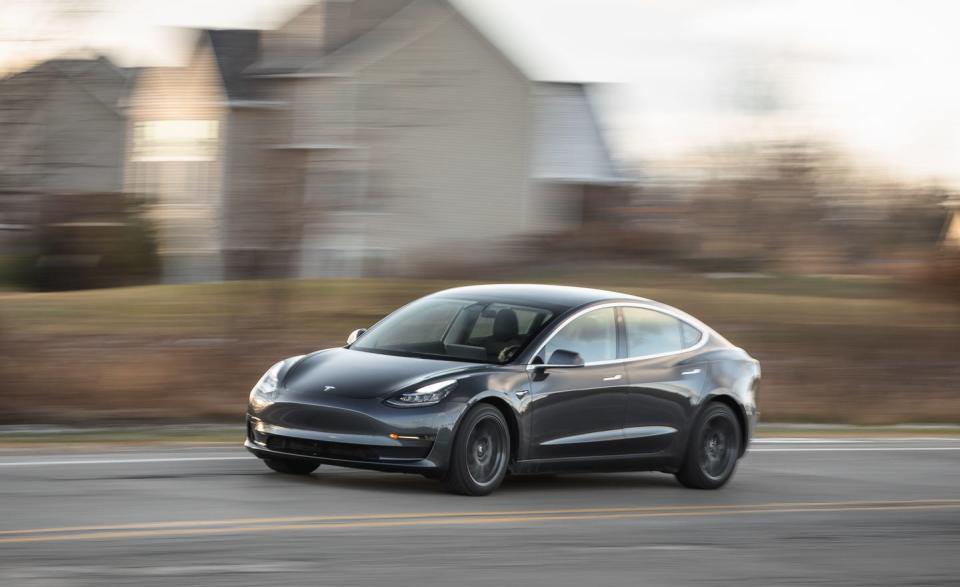
With more than a year and 24,000 miles logged with our Tesla Model 3, we're way past the honeymoon phase. Our initial 12 months of included premium connectivity has expired, which means in-car audio and video streaming now only works with a Wi-Fi connection. And since not one of our area Superchargers has it, we are no longer whiling away the time spent charging our car by streaming Netflix.

 Yahoo Autos
Yahoo Autos 